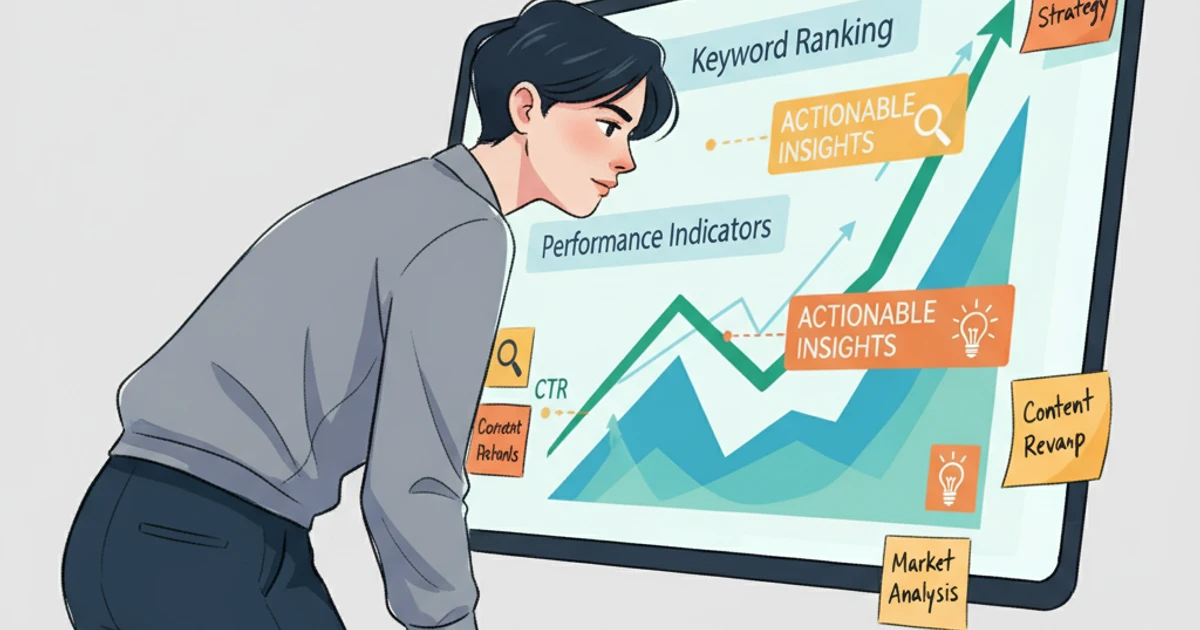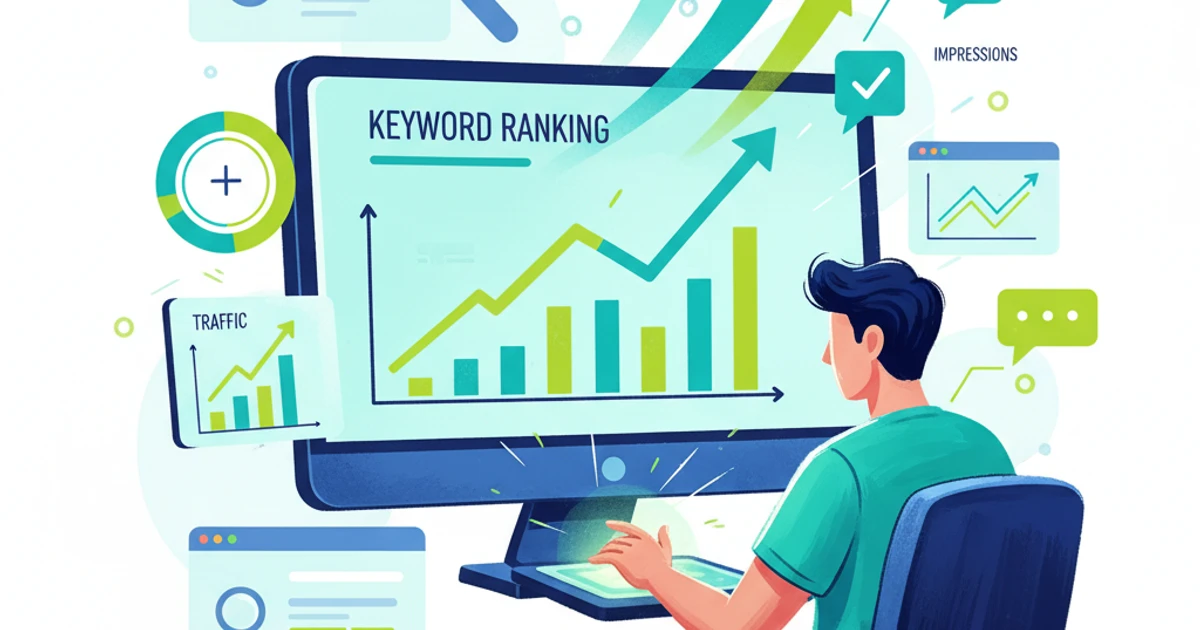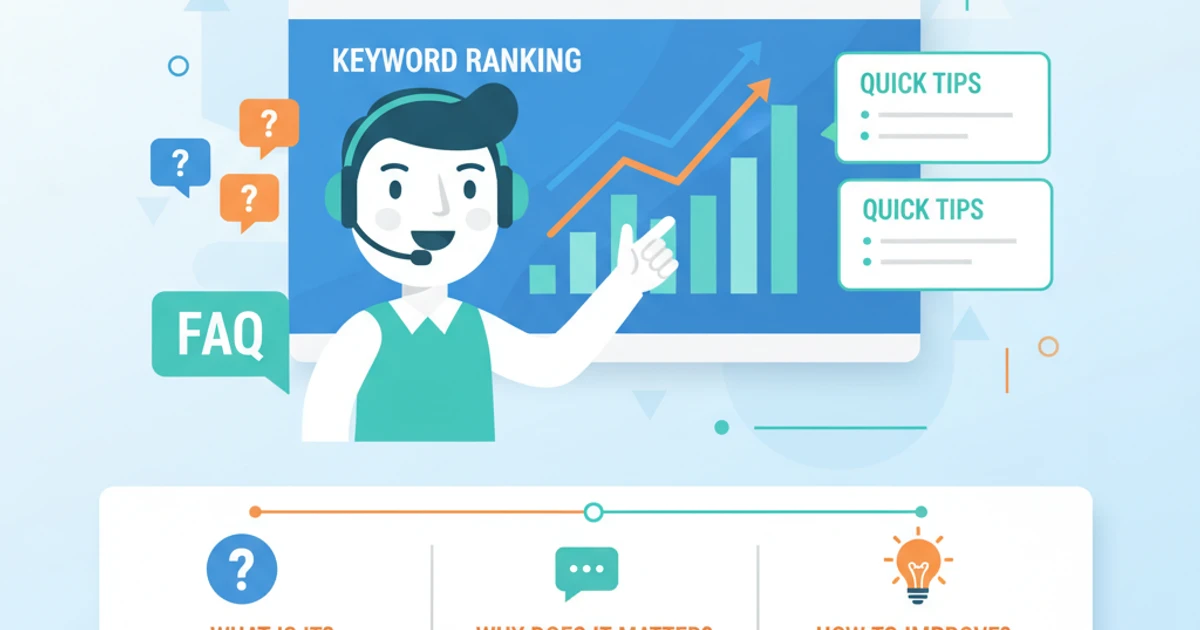Best way to track Keyword Positions- Ways to increase website visibility
Curious how top sites maintain high rankings? Uncover proven keyword monitoring techniques with Indexly to boost your website’s visibility and outpace competitors.

Picture this: You invest countless hours refining your website, but your traffic flatlines, and your brand remains invisible beneath competitors in search results. Struggling to track which keywords drive—or derail—your rankings is a common frustration, especially for growth-minded website owners keen on maximizing online visibility.
Capturing and keeping top search rankings means you can't afford to guess which keywords matter or how your site performs on Google, Bing, Yandex, or new AI-driven engines. Mastering keyword monitoring not only clarifies which strategies deliver results, but also reveals gaps in your SEO efforts, uncovers competitors’ tactics, and guides your next steps. Achieving meaningful ranking improvements does take consistent effort and a thoughtful approach, but with the right tools and processes, staying ahead becomes manageable and measurable.
If you’re not actively tracking your keyword rankings, you’re leaving your website’s visibility to chance—at Indexly, we believe every spot you ignore is a step your competition gains.

Indexly
Indexly is your complete indexing and SEO visibility platform — Enable auto-indexing on Google, Bing & Yandex, LLMs (ChatGPT, Perplexity, Claude), Technical SEO, powerful Keyword Monitoring & user-friendly website analytics.
Indexly helps you index, monitor, and manage — so your content starts ranking when it matters most.
Understanding the Importance of Keyword Rankings for Website Visibility
Keyword rankings play a pivotal role in determining how easily your target audience can find your website through major search engines like Google, Bing, or Yandex. Getting indexed is just the first step—climbing the ranks for the right keywords is what truly impacts visibility and drives visitors interested in your products or services.
The Role of Keywords in Driving Targeted Organic Traffic
When people search online, they use specific keywords to find answers, products, or information. Choosing and optimizing for keywords that align with your business offerings helps attract visitors with higher intent to convert. For instance, an online retailer targeting 'eco-friendly water bottles' rather than just 'water bottles' draws in a more relevant audience searching for sustainable solutions, boosting both traffic quality and conversion rates.
Why Monitoring Keyword Rankings is Essential for SEO Strategy
Regularly tracking where your website stands for valuable keywords helps you measure the effectiveness of ongoing SEO efforts and respond quickly to ranking changes. By monitoring keyword positions, SEO professionals and agencies can identify opportunities for optimization and address content gaps. Using tools like Indexly, teams can streamline bulk keyword analysis, making ongoing optimization more efficient and actionable.
How Improved Rankings Impact Website Visibility and Business Growth
Climbing from the second or third page of search results to the top positions on page one greatly increases impressions and click-through rates. For example, studies show that the first result on Google secures about 27% of all clicks, while results below the fold receive significantly less attention. Improved visibility drives more organic traffic, resulting in increased leads, sales, and brand authority for your business.
Common Pitfalls of Neglecting Keyword Tracking
Overlooking keyword ranking trends can lead to missed opportunities and stagnating growth. Some common mistakes include ignoring declining rankings, failing to adapt to algorithm updates, or relying on outdated keyword lists. Businesses that stop tracking often struggle with unexplained traffic drops and find it difficult to diagnose SEO issues promptly, which ultimately affects revenue and reputation.

Selecting the Right Tools to Monitor Keyword Rankings
2. Selecting the Right Tools to Monitor Keyword Rankings
Monitoring keyword rankings is vital for understanding your SEO performance and making informed decisions. With a variety of tools available, choosing the best option requires discerning the features and integrations that align with your business goals and workflow. Effective keyword tracking ensures your strategies adapt to search engine updates and shifting market trends.
Essential Keyword Tracking Tools
A diverse set of keyword tracking tools helps uncover ranking shifts, segment performance by region, and diagnose technical issues. For instance:
- Indexly: Offers automated indexing with integrated keyword analysis, helping websites track and boost their positions across Google, Bing, and Yandex. Agencies benefit from Indexly's bulk monitoring and detailed reporting features.
- Google Search Console: Delivers free, direct data from Google, highlighting keyword queries, impressions, and average ranking positions. Website owners use it to spot underperforming keywords and page-specific ranking drops.
- Keyword.com: Provides automated tracking, SERP snapshots, and competitive benchmarking. Marketers leverage its reporting tools to identify keyword opportunities and assess campaign impact.
Manual vs. Automated Monitoring
Deciding between manual checks and automation depends on scale and accuracy needs. Manual tracking involves periodic searches and spreadsheet logging—sufficient for small websites but prone to human error and bias. Automated platforms, like Indexly or Keyword.com, continuously scan rankings, send alerts, and display historical trends, ensuring no fluctuation goes unnoticed.
Tip: Relying solely on manual processes may cause missed ranking drops or update delays during core algorithm changes.
Key Features in Ranking Platforms
Before selecting a platform, evaluate critical capabilities:
- Real-time updates and alerts for significant ranking changes
- Customizable reports tailored to agency or client needs
- Bulk keyword upload to track multiple pages simultaneously
- Integration with on-page audit, indexing, and backlink tracking tools
For example, integrating Indexly’s keyword analysis with backlink monitoring reveals if new links directly influence rankings, clarifying ROI on outreach campaigns.
Integrating Keyword Tracking with Analytics & Indexing Tools
Combining keyword tracking with analytics and automation platforms streamlines optimization. Connect ranking data to Google Analytics or Indexly’s dashboard to link keyword movement with traffic spikes or drop-offs. This full-funnel visibility allows agencies to pinpoint which ranking improvements translate into tangible traffic and conversions, prioritizing actions based on data-driven insights.
Interpreting Keyword Ranking Data for Actionable Insights

Deciphering keyword ranking data is essential for making informed SEO decisions that drive results. Beyond simply knowing where your keywords stand, actionable interpretation helps prioritize your strategy, identify quick wins, and address underlying issues that affect rankings and organic traffic.
Analyzing Ranking Fluctuations and Identifying Core Issues
Consistent monitoring of ranking movements reveals shifts that require attention. If a target keyword suddenly drops in position, investigate recent site changes, competitor activities, or technical SEO problems. For example, an e-commerce brand saw a drop in product rankings after modifying page URLs without setting up proper redirects, leading to traffic loss and decreased sales. Identifying the core cause allows timely corrective action.
Understanding Keyword Cannibalization and Overlap
When multiple pages on your site compete for the same keyword, search engines may struggle to determine which is most relevant—diluting authority and hurting performance. Review ranking data to pinpoint URLs that overlap for identical terms. For instance, a digital agency consolidated two blog posts covering similar topics into one comprehensive guide, resulting in improved rankings and reduced confusion for both users and search engines.
Spotting Pages with Declining or Rising Visibility
Tracking which pages are gaining or losing positions helps direct focused SEO interventions. If a high-value service page consistently drops, reassess on-page content, internal linking, and backlink profiles. Conversely, rising pages signal what strategies are working, offering clues for replicating success across other areas.
Prioritizing SEO Efforts Based on Ranking Insights
Once critical issues and opportunities are identified, organize your optimization tasks by impact:
- Target declining high-traffic keywords to prevent further losses.
- Address cannibalization by merging or differentiating content.
- Amplify rising performers with internal links or richer content.
By acting on ranking insights methodically, you maximize organic growth and allocate resources efficiently—ensuring your SEO strategy delivers measurable business outcomes.
Optimizing Website Content Based on Ranking Performance
Analyzing how your website ranks for target keywords reveals opportunities to enhance your content and outperform competitors. By prioritizing the right updates, you can boost both visibility and user engagement. Each optimization tactic below plays a vital role in improving your site's search engine standing.
Updating and Enhancing Content to Target High-Potential Keywords
Begin by tracking the keywords that drive the most impressions but haven't yet secured a top-three ranking position. Updating existing articles with additional sections, refreshed examples, or new data can help them better target these search terms. For instance, an Indexly client optimized their SaaS comparison page by including features and user testimonials around rising keywords, resulting in a 25% increase in click-through rate in just two months.
Addressing Content Gaps and Improving Topical Relevance
Filling content gaps strengthens your site’s authority. Perform a gap analysis by comparing your content to top-ranking competitors using tools such as Indexly’s on-page SEO audit and keyword analysis. If competitors cover a topic your site only mentions briefly, create a dedicated in-depth resource. Avoid duplicating thin content—focus instead on comprehensive guides or actionable posts that outrank lighter coverage.
Improving On-Page SEO Elements (Titles, Headers, Meta Descriptions)
Small tweaks to on-page elements often yield immediate SEO gains. Use the following steps to optimize:
- Revise page titles: Make them keyword-rich but natural, prioritizing clarity over keyword stuffing.
- Update headers (H1, H2, H3): Structure content logically for both search engines and readers.
- Rewrite meta descriptions: Aim for unique summaries that encourage clicks and accurately reflect page content.
Common mistake: Over-optimization with unnatural keyword use can lead to lower rankings. Focus on relevance and user intent.
Enhancing User Experience for Better Engagement and Rankings
Improving user experience (UX) not only satisfies visitors but signals quality to search engines. Reduce page load times, use readable font sizes, and ensure your site is mobile-friendly. An e-commerce business using Indexly streamlined their checkout process and saw both a lower bounce rate and improved rankings within a quarter. Prioritize clear calls to action and engaging multimedia to hold user attention and reduce pogo-sticking.
Leveraging Continuous Monitoring for Ongoing Visibility Growth

Consistent visibility in search results is an ever-moving target due to frequent search algorithm updates and evolving competition. Continuous monitoring empowers website owners to respond swiftly, spotting issues early and capitalizing on new opportunities before rankings slip. Effective use of platforms like Indexly ensures that no technical or content issue lingers unnoticed, supporting sustainable visibility gains.
Using Keyword Monitoring to Adapt to Search Algorithm Updates
Keyword rankings rarely remain static, especially when Google, Bing, or Yandex roll out core updates. By regularly tracking your most valuable keywords, it becomes possible to identify sudden drops or surprising boosts. For instance, when an ecommerce site notices a dip in its key product page rankings, immediate analysis can reveal whether it’s a site issue, increased competitor activity, or a new algorithm emphasis—allowing for targeted adjustments.
- Set up automatic keyword tracking to receive alerts for significant ranking changes. This enables instant reaction to algorithm shifts.
- Review competitor keyword movements to see if visibility changes are isolated or industry-wide, helping to benchmark your response.
- Update on-page content and SEO attributes for keywords impacted by updates to better align with new search intent signals.
Conclusion
Why Consistent Keyword Monitoring Is Critical for Visibility
Maintaining search visibility requires more than choosing the right keywords—it demands ongoing attention to real-time changes in search engine results and user behavior. Regular keyword monitoring ensures your business can react quickly when rankings shift or competitors enter your space. Consider an agency leveraging daily tracking to react to Google algorithm updates within hours, staying ahead of competing brands and preventing lost traffic opportunities.
How Actionable Tracking Powers Organic Growth
Analyzing keyword performance is only valuable when it leads to actionable insights. By turning metrics into concrete steps, you can directly influence rankings and organic growth. For example, adjusting content based on underperforming keywords or optimizing metadata for those slipping from page one helps maintain or improve visibility, a tactic frequently employed by successful digital marketing teams.
Tools Like Indexly for Efficient Keyword Management
Managing dozens or hundreds of keywords can be overwhelming without the right tools. Platforms such as Indexly bring automation and clarity, allowing teams to efficiently handle bulk tracking, in-depth reporting, and instant competitor insights. A mid-sized e-commerce business, for instance, can use Indexly to monitor thousands of keywords across multiple regions, saving hours each week while keeping stakeholders updated with clear analytics.
Begin or Enhance Your Keyword Monitoring Practice
If you haven’t yet implemented a regular system for keyword tracking, now is the time to begin. Start small—monitor your top target keywords, then expand over time. For businesses already tracking, conduct a quarterly audit of your processes and toolset, ensuring you’re getting timely data and making use of advanced automation features.
Clear Steps for Boosting Website Visibility
To maintain and improve your search rankings, follow this action plan:
- Identify Core Keywords: Pinpoint the most valuable keywords for your niche using reliable analysis.
- Set Up Automated Tracking: Use a platform like Indexly to monitor performance and spot significant ranking changes.
- Refine Content Regularly: Update target pages based on tracked keyword data to address gaps or drops in rankings.
- Expand and Prioritize: Continuously add new keywords based on search trends and evolving business priorities.
Regular review and swift response to keyword data not only protect your visibility but open doors to new growth. Put these steps into practice and watch your website’s organic reach flourish.
FAQs

FAQs
Maximizing your website’s visibility requires a thorough understanding of keyword monitoring and actionable optimization strategies. Here, we address essential questions around keyword ranking, analysis, and troubleshooting to help you elevate your site’s search presence with practical guidance.
What is the most effective way to increase website visibility through keyword monitoring?
Continuous tracking of your primary and secondary keywords uncovers performance trends and new opportunities. Identify high-traffic search terms relevant to your audience and monitor their movement regularly. For instance, businesses using Indexly can automate keyword discovery and compare keyword visibility across multiple search engines, ensuring that targeted content aligns with current demand.
How often should I check my keyword rankings for optimal results?
Weekly checks offer a balanced approach, providing timely insights without overwhelming daily fluctuations. Track keywords more frequently after major site updates, product launches, or algorithm changes. Agencies have found that timely adjustments based on ranking shifts prevent traffic losses and support continual growth.
Why do keyword rankings fluctuate and how should I respond?
Algorithm changes, competitor actions, and user behavior all cause ranking volatility. Analyze ranking drops to identify patterns—such as outages, duplicate content, or insufficient backlinks—and address root causes instead of reacting hastily. For example, a dip following a Google update often requires technical audits rather than impulsive content overhauls.
Which tools are best for keyword tracking and website visibility analysis?
Effective platforms offer accurate, multi-engine tracking, on-page audit features, and actionable analytics. Indexly, Ahrefs, and SEMrush are widely adopted for their comprehensive dashboards and automation capabilities. Table 1 compares core tool features for visibility analysis:
When should I update my content based on keyword ranking data?
Update content when target keywords slip from first-page results, or if search intent shifts in your industry. Schedule quarterly reviews of evergreen pages and refresh blog posts that have lost visibility. A digital agency increased organic traffic by 30% in one quarter after systematically re-optimizing declining articles.
How can I identify and resolve issues affecting my website’s search visibility?
Start with an on-page SEO audit using platforms like Indexly to uncover technical errors, slow-loading pages, and content gaps. Prioritize resolving critical issues—such as missing meta tags, faulty redirects, or poor mobile usability. Common mistakes include neglecting mobile optimization or forgetting to update sitemaps after major changes, both of which can delay indexing and reduce your traffic potential.



